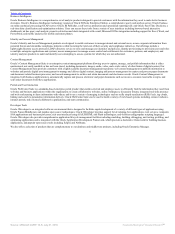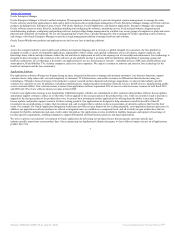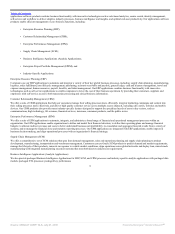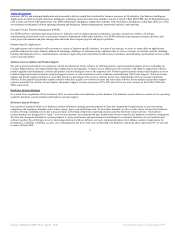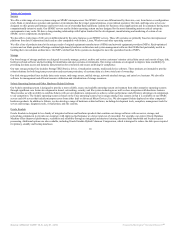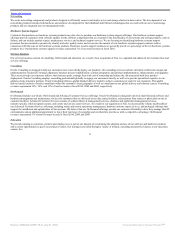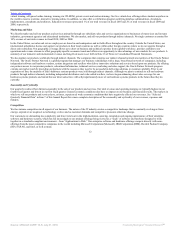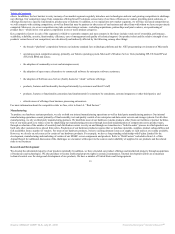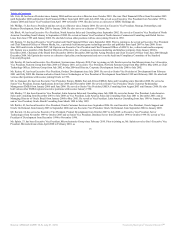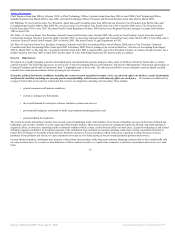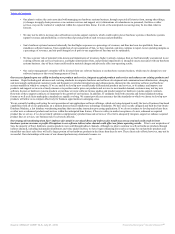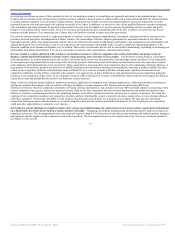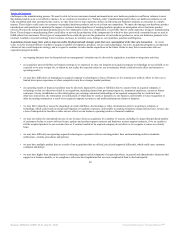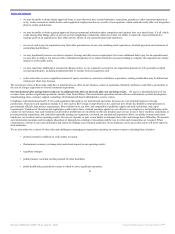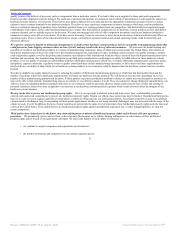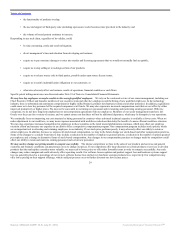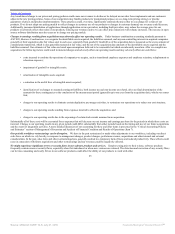Oracle 2009 Annual Report Download - page 20
Download and view the complete annual report
Please find page 20 of the 2009 Oracle annual report below. You can navigate through the pages in the report by either clicking on the pages listed below, or by using the keyword search tool below to find specific information within the annual report.
Table of Contents
Chief Engineer from June 2006 to February 2010, as Chief Technology Officer, Systems Group from June 2006 to April 2008, Chief Technology Officer,
Scalable Systems from March 2004 to June 2006, and Chief Technology Officer, Processor and Network Products from June 2002 to March 2004.
Mr. Williams, 65, has been Executive Vice President, Japan Sales and Consulting since June 2008 and was Executive Vice President, Asia Pacific Sales and
Consulting from October 2000 to May 2008. He served as Senior Vice President, Asia Pacific from July 1993 to October 2000 and as Vice President, Asia
Pacific from April 1991 to July 1993. He joined Oracle United Kingdom in October 1988 and served as Regional Director, Strategic Accounts from October
1988 to April 1991.
Ms. Daley, 51, has been Senior Vice President, General Counsel and Secretary since October 2007. She served as Vice President, Legal, Associate General
Counsel and Assistant Secretary from June 2004 to October 2007, as Associate General Counsel and Assistant Secretary from October 2001 to June 2004, and as
Associate General Counsel from February 2001 to October 2001. She joined Oracle’s Legal Department in 1992.
Mr. West, 48, has been Senior Vice President, Corporate Controller and Chief Accounting Officer since February 2008 and was Vice President, Corporate
Controller and Chief Accounting Officer from April 2007 to February 2008. Prior to joining us, he served as Intuit Inc.’s Director of Accounting from August
2005 to March 2007, as The Gap, Inc.’s Assistant Controller from April 2005 to August 2005, and as Vice President, Finance, at Cadence Design Systems, Inc.’s
product business from June 2001 to April 2005. He also spent 14 years with Arthur Andersen LLP, most recently as a partner.
Item 1A. Risk Factors
We operate in a rapidly changing economic and technological environment that presents numerous risks, many of which are driven by factors that we cannot
control or predict. The following discussion, as well as our “Critical Accounting Policies and Estimates” discussion in Management’s Discussion and Analysis of
Financial Condition and Results of Operations (Item 7), highlights some of these risks. The risks described below are not exhaustive and you should carefully
consider these risks and uncertainties before investing in our securities.
Economic, political and market conditions, including the recent recession and global economic crisis, can adversely affect our business, results of operations
and financial condition, including our revenue growth and profitability, which in turn could adversely affect our stock price. Our business is influenced by
a range of factors that are beyond our control and that we have no comparative advantage in forecasting. These include:
• general economic and business conditions;
• currency exchange rate fluctuations;
• the overall demand for enterprise software, hardware systems and services;
• governmental budgetary constraints or shifts in government spending priorities; and
• general political developments.
The recent recession and global economic crisis caused a general tightening in the credit markets, lower levels of liquidity, increases in the rates of default and
bankruptcy, and extreme volatility in credit, equity and fixed income markets. These macroeconomic developments negatively affected, and could continue to
negatively affect, our business, operating results or financial condition which, in turn, could adversely affect our stock price. A general weakening of, and related
declining corporate confidence in, the global economy or the curtailment in government or corporate spending could cause current or potential customers to
reduce their IT budgets or be unable to fund software, hardware systems or services purchases, which could cause customers to delay, decrease or cancel
purchases of our products and services or cause customers not to pay us or to delay paying us for previously purchased products and services.
In some financial markets, institutions may decrease or discontinue their purchase of the long-term customer financing contracts that we have traditionally sold
on a non-recourse basis. As a result, we may hold more of these contracts ourselves or require more customers to purchase our products and services on a cash
basis.
16
Source: ORACLE CORP, 10-K, July 01, 2010 Powered by Morningstar® Document Research℠


